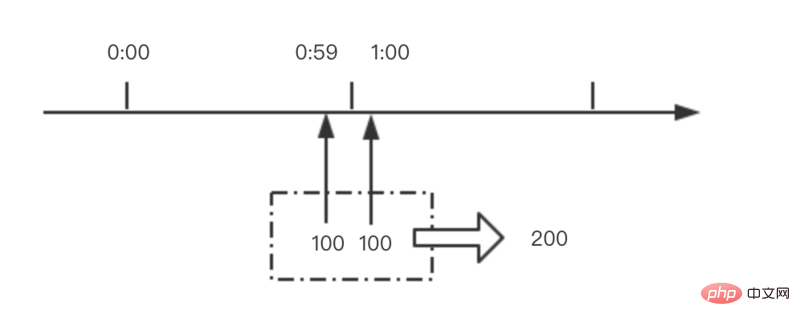proxy protocol is applied in nginx
We know that nginx is a web server and proxy server. It generally works in proxy server or load balancing software (Haproxy , behind Amazon Elastic Load Balancer (ELB).
First, the client initiates a request to the proxy server or load balancing software, and then the request will be forwarded to nginx for actual web access.
Because it has gone through multiple layers of software, some information on the client such as IP address, port number, etc. may be hidden, which is detrimental to our problem analysis and data statistics. We hope to obtain the real IP address of the client in order to obtain Accurate request environment.
In this case, you need to use the PROXY protocol.
If the proxy or LSB mentioned above implement the PROXY protocol, whether it is HTTP or SSL , HTTP/2, SPDY, WebSocket or TCP protocol, nginx can get the original IP address of the client and perform some special operations based on the original IP address, such as blocking access from malicious IPs and displaying different languages or pages based on different IPs. , or simpler logging and statistics, etc., are very effective.
Of course, if you want to support PROXY protocol, there are also requirements for the nginx version. The specific version requirements are as follows:
To support PROXY protocol v2, you need NGINX Plus R16 or NGINX Open Source 1.13.11.
To support ROXY protocol for HTTP, you need NGINX Plus R3 or NGINX Open Source 1.5.12.
To support TCP client‑side PROXY protocol, NGINX Plus R7 or NGINX Open Source 1.9.3 is required.
-
To support PROXY protocol for TCP, you need NGINX Plus R11 or NGINX Open Source 1.11.4.
In nginx, you can obtain the corresponding client information through the following variables , specifically as follows:
$proxy_protocol_addr and $proxy_protocol_port represent the IP address and port number of the original client respectively.
$remote_addr and $remote_port represent the IP address and port of the load balancer.
If you use the RealIP extension module, then this module will rewrite the two values of $remote_addr and $remote_port, replacing them with the IP address and port number of the original client.
Then use $realip_remote_addr and $realip_remote_port to represent the IP address and port of the load balancer.
In the RealIP extension module, the meaning of $proxy_protocol_addr and $proxy_protocol_port remains unchanged, which is still the IP address and port number of the original client.
Configuring and using proxy protocol in nginx
We mentioned above the basic application of proxy protocol in nginx. Let’s talk about how to perform specific configuration in nginx.
Enable proxy protocol in nginx
If your nginx is already a version that supports proxy protocol, then enabling proxy protocol is very simple. You only need to add proxy_protocol to the listen in the server. As shown below:
http {
#...
server {
listen 80 proxy_protocol;
listen 443 ssl proxy_protocol;
#...
}
}
stream {
#...
server {
listen 112233 proxy_protocol;
#...
}
}Everyone is more familiar with the http block. In nginx, it represents support for http/https. Nginx provides support for the TCP/UDP protocol. This function is implemented through the stream module, which is relatively unfamiliar to many people.
Through the above configuration, nginx can support proxy protocol in both tcp/udp protocol and http/https protocol.
Using Real‑IP modules
Real‑IP modules is a module that comes with nginx. You can use the following command to check whether nginx has the real-ip module installed:
nginx -V 2>&1 | grep -- 'http_realip_module' nginx -V 2>&1 | grep -- 'stream_realip_module'
If the version you are currently using does not have real ip, don't worry, you may need to compile from the source code at this time.
During the compilation process, we need to execute a configure command. In this configure command, you can specify the functions to be enabled, such as stream or http_ssl_module:
$ ./configure --sbin-path=/usr/local/nginx/nginx --conf-path=/usr/local/nginx/nginx.conf --pid-path=/usr/local/nginx/nginx.pid --with-pcre=../pcre-8.44 --with-zlib=../zlib-1.2.11 --with-http_ssl_module --with-stream --with-mail
If you want to enable the real-ip function , you can add:
--with-http_realip_module
If nginx is running behind SLB or proxy, you can use the set_real_ip_from command to specify the IP range of the proxy or load balancing server, as follows:
server {
#...
set_real_ip_from 192.168.1.0/24;
#...
}Then we need to replace the IP address of the proxy or SLB with the address of the real client, then we can use it like this:
http {
server {
#...
real_ip_header proxy_protocol;
}
}Request forwarding
Whether it is http or stream block, you may encounter the request direction For subsequent upstream forwarding, for upstream, they hope to receive the real client IP address instead of the proxy or slb address. This can be solved by the following settings:
http {
proxy_set_header X-Real-IP $proxy_protocol_addr;
proxy_set_header X-Forwarded-For $proxy_protocol_addr;
}stream {
server {
listen 12345;
proxy_pass example.com:12345;
proxy_protocol on;
}
}http The setting method of stream is different.
Logging
Log is a very important function. It is very useful for locating problems and performing statistical analysis of data. Of course, what we need is the real client IP address.
We can record the corresponding logs in the http and stream block by using the variable $proxy_protocol_addr, as shown below:
http {
#...
log_format combined '$proxy_protocol_addr - $remote_user [$time_local] '
'"$request" $status $body_bytes_sent '
'"$http_referer" "$http_user_agent"';
}stream {
#...
log_format basic '$proxy_protocol_addr - $remote_user [$time_local] '
'$protocol $status $bytes_sent $bytes_received '
'$session_time';
}The above is the detailed content of How to configure and use proxy protocol in nginx. For more information, please follow other related articles on the PHP Chinese website!
 内存飙升!记一次nginx拦截爬虫Mar 30, 2023 pm 04:35 PM
内存飙升!记一次nginx拦截爬虫Mar 30, 2023 pm 04:35 PM本篇文章给大家带来了关于nginx的相关知识,其中主要介绍了nginx拦截爬虫相关的,感兴趣的朋友下面一起来看一下吧,希望对大家有帮助。
 nginx限流模块源码分析May 11, 2023 pm 06:16 PM
nginx限流模块源码分析May 11, 2023 pm 06:16 PM高并发系统有三把利器:缓存、降级和限流;限流的目的是通过对并发访问/请求进行限速来保护系统,一旦达到限制速率则可以拒绝服务(定向到错误页)、排队等待(秒杀)、降级(返回兜底数据或默认数据);高并发系统常见的限流有:限制总并发数(数据库连接池)、限制瞬时并发数(如nginx的limit_conn模块,用来限制瞬时并发连接数)、限制时间窗口内的平均速率(nginx的limit_req模块,用来限制每秒的平均速率);另外还可以根据网络连接数、网络流量、cpu或内存负载等来限流。1.限流算法最简单粗暴的
 nginx+rsync+inotify怎么配置实现负载均衡May 11, 2023 pm 03:37 PM
nginx+rsync+inotify怎么配置实现负载均衡May 11, 2023 pm 03:37 PM实验环境前端nginx:ip192.168.6.242,对后端的wordpress网站做反向代理实现复杂均衡后端nginx:ip192.168.6.36,192.168.6.205都部署wordpress,并使用相同的数据库1、在后端的两个wordpress上配置rsync+inotify,两服务器都开启rsync服务,并且通过inotify分别向对方同步数据下面配置192.168.6.205这台服务器vim/etc/rsyncd.confuid=nginxgid=nginxport=873ho
 nginx php403错误怎么解决Nov 23, 2022 am 09:59 AM
nginx php403错误怎么解决Nov 23, 2022 am 09:59 AMnginx php403错误的解决办法:1、修改文件权限或开启selinux;2、修改php-fpm.conf,加入需要的文件扩展名;3、修改php.ini内容为“cgi.fix_pathinfo = 0”;4、重启php-fpm即可。
 如何解决跨域?常见解决方案浅析Apr 25, 2023 pm 07:57 PM
如何解决跨域?常见解决方案浅析Apr 25, 2023 pm 07:57 PM跨域是开发中经常会遇到的一个场景,也是面试中经常会讨论的一个问题。掌握常见的跨域解决方案及其背后的原理,不仅可以提高我们的开发效率,还能在面试中表现的更加
 nginx部署react刷新404怎么办Jan 03, 2023 pm 01:41 PM
nginx部署react刷新404怎么办Jan 03, 2023 pm 01:41 PMnginx部署react刷新404的解决办法:1、修改Nginx配置为“server {listen 80;server_name https://www.xxx.com;location / {root xxx;index index.html index.htm;...}”;2、刷新路由,按当前路径去nginx加载页面即可。
 Linux系统下如何为Nginx安装多版本PHPMay 11, 2023 pm 07:34 PM
Linux系统下如何为Nginx安装多版本PHPMay 11, 2023 pm 07:34 PMlinux版本:64位centos6.4nginx版本:nginx1.8.0php版本:php5.5.28&php5.4.44注意假如php5.5是主版本已经安装在/usr/local/php目录下,那么再安装其他版本的php再指定不同安装目录即可。安装php#wgethttp://cn2.php.net/get/php-5.4.44.tar.gz/from/this/mirror#tarzxvfphp-5.4.44.tar.gz#cdphp-5.4.44#./configure--pr
 nginx怎么禁止访问phpNov 22, 2022 am 09:52 AM
nginx怎么禁止访问phpNov 22, 2022 am 09:52 AMnginx禁止访问php的方法:1、配置nginx,禁止解析指定目录下的指定程序;2、将“location ~^/images/.*\.(php|php5|sh|pl|py)${deny all...}”语句放置在server标签内即可。


Hot AI Tools

Undresser.AI Undress
AI-powered app for creating realistic nude photos

AI Clothes Remover
Online AI tool for removing clothes from photos.

Undress AI Tool
Undress images for free

Clothoff.io
AI clothes remover

AI Hentai Generator
Generate AI Hentai for free.

Hot Article

Hot Tools

VSCode Windows 64-bit Download
A free and powerful IDE editor launched by Microsoft

MantisBT
Mantis is an easy-to-deploy web-based defect tracking tool designed to aid in product defect tracking. It requires PHP, MySQL and a web server. Check out our demo and hosting services.

mPDF
mPDF is a PHP library that can generate PDF files from UTF-8 encoded HTML. The original author, Ian Back, wrote mPDF to output PDF files "on the fly" from his website and handle different languages. It is slower than original scripts like HTML2FPDF and produces larger files when using Unicode fonts, but supports CSS styles etc. and has a lot of enhancements. Supports almost all languages, including RTL (Arabic and Hebrew) and CJK (Chinese, Japanese and Korean). Supports nested block-level elements (such as P, DIV),

Dreamweaver CS6
Visual web development tools

SublimeText3 Mac version
God-level code editing software (SublimeText3)






